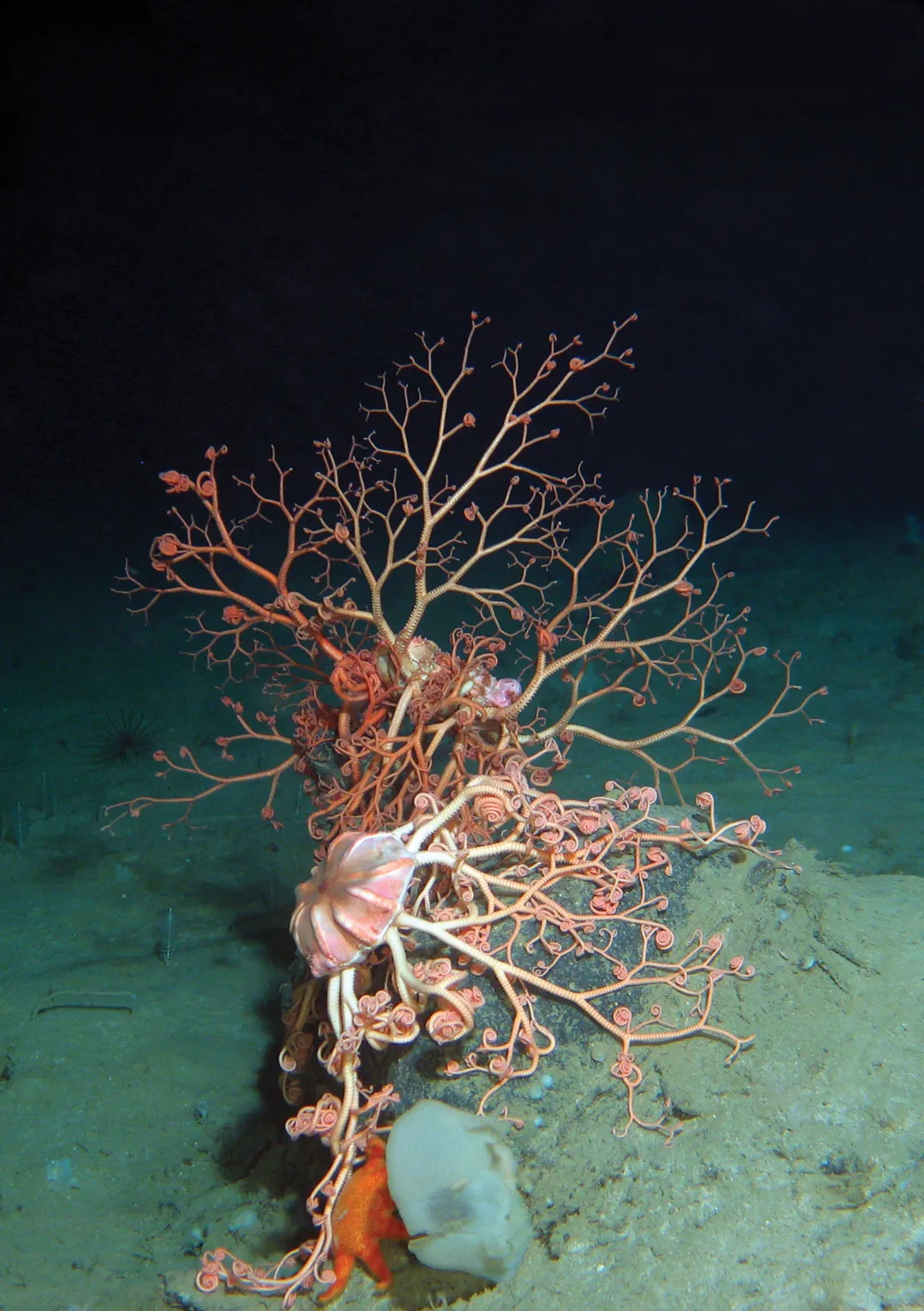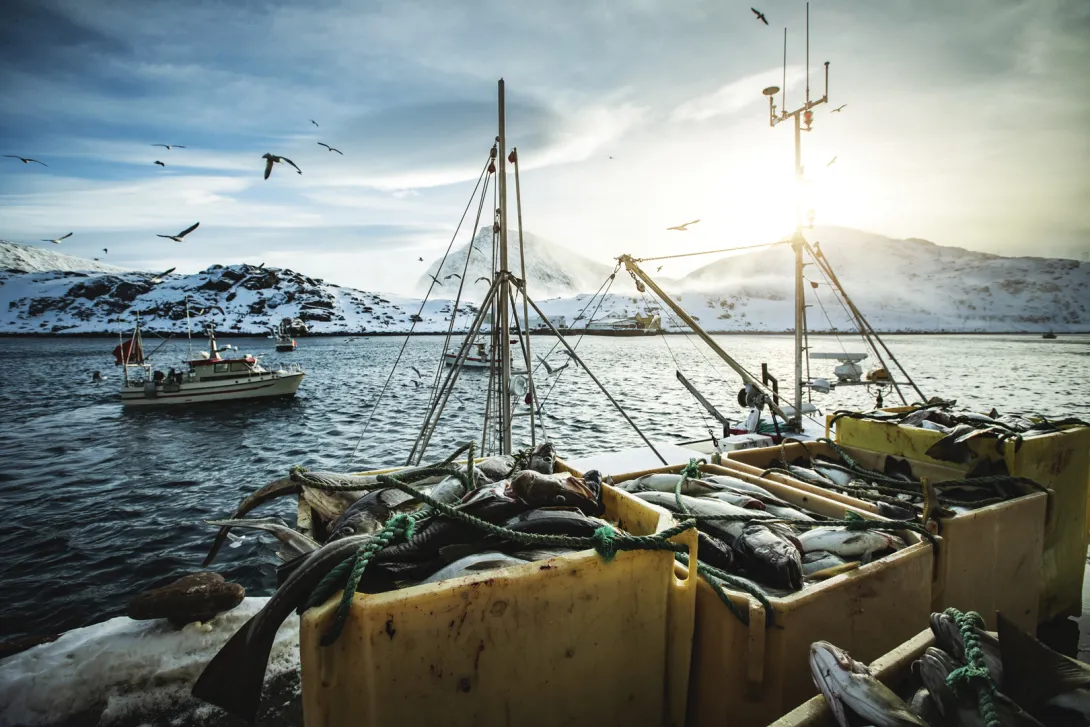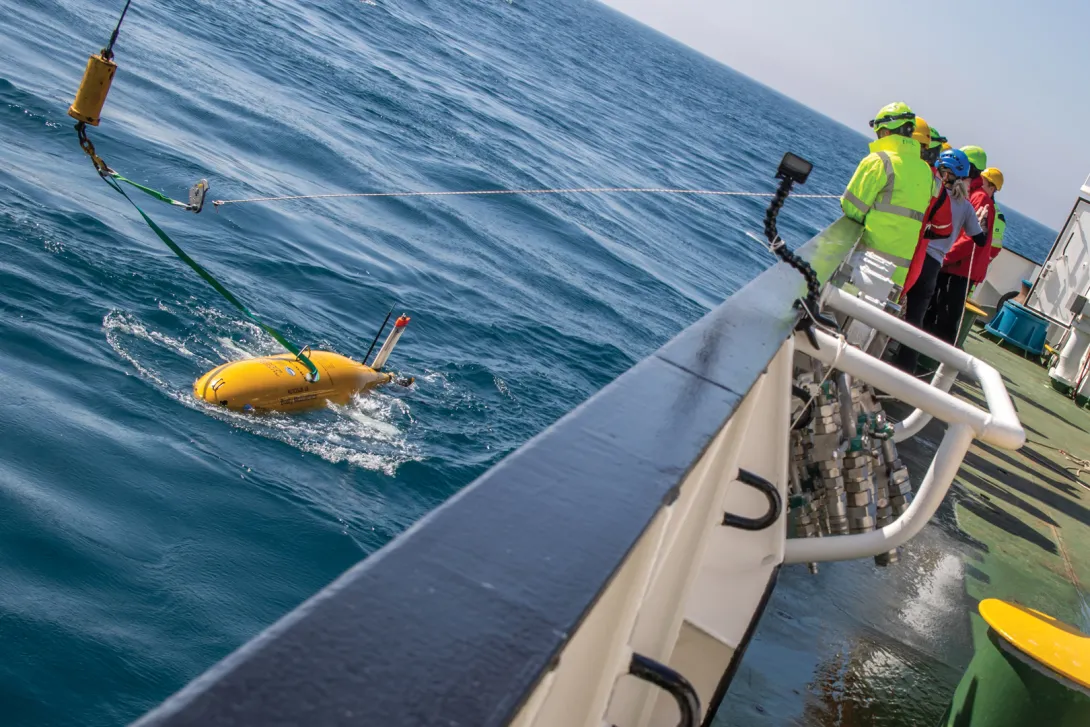Rapid Arctic Change
The Arctic plays a fundamental role in the Earth’s climate system and its unique sea-ice environment and ecosystems provide resources and a way of life to indigenous and local Arctic communities. The Arctic, however, is rapidly changing, threatening our global climate, weather, and biodiversity.
Warming in the Arctic is occurring up to four times faster than the global average, driving rapid losses of sea ice, glaciers and permafrost. The Arctic could be sea ice free in the summer by the middle of this century. These changes have profound implications, not only for the local ecosystem and the health and livelihoods of the indigenous and local communities that call the Arctic home, but for every person on our planet.
Arctic Ocean and atmospheric circulation changes could disrupt global climate stability and modify regional weather patterns and extremes worldwide, exposing people and infrastructure to increasing hazards.
Shifts in Arctic marine biodiversity could destabilise the food resources that the ecosystem provides, reduce its ability to withstand environmental change, threaten vulnerable species, as well as the health and livelihoods of communities that rely on the ocean.
Ice melt from Arctic glaciers and the Greenland Ice Sheet contributes to global sea-level rise, impacting coastal communities worldwide.
As the Arctic becomes more accessible, its ocean economy will continue to grow and emerging opportunities such as tourism, fisheries resource extraction, and shipping will need to be carefully managed against risks to the environment, biodiversity, people, infrastructure, and geopolitical stability. It is essential that the growth of marine-based economies in the Arctic takes place sustainably and that the health, wellbeing, and cultural practices of Arctic communities are protected.
Research Themes
NOC conducts world-leading research in ocean modelling and climate change, biodiversity and ecosystems, marine geohazards, remote and in-situ sensors, marine autonomy and digital technologies. We have been delivering high-impact Arctic research for decades.
In collaboration with diverse and international partners, we aim to leverage our multi-disciplinary science and technology expertise to deliver multi-platform, multi-sensor, and multi-season field programmes—with a focus on under-ice exploration—and harness the power of our ocean models and digital tools to provide critical new knowledge for the 5th International Polar Year.
We seek to work alongside Arctic communities to facilitate research that is co-designed with those most impacted by Arctic change, and we endeavour to advocate for the Arctic Ocean by raising public, industrial and political awareness of the risks and opportunities presented by a rapidly changing Arctic environment.
Our ability to integrate observational, modelling and digital approaches in one of the world’s most challenging environments, will help us address knowledge and capability gaps across the following six themes:

Ice-Free Arctic and Global Climate
As Arctic sea ice, ice sheets and permafrost are lost, the ocean, atmosphere, and land are becoming more tightly linked. What happens in the Arctic influences the large-scale ocean and atmospheric systems at lower latitudes and the processes that regulate global climate stability and extremes. In this theme, we are looking to address the following questions:
- How close are we to an ice-free Arctic?
- How will Arctic Ocean circulation and mixing change as ice is lost?
- Will an ice-free Arctic reshape Earth's climate trajectory and push the planet toward a global tipping point?
The combination of world-leading global and regional ocean-ice-atmosphere models, autonomous underwater vehicles (AUV), and observational capabilities such as satellites, drones and radar systems means that NOC is uniquely placed to improve our understanding of the climate risks posed by Arctic sea-ice loss.

Extreme Events and Hazards
Arctic warming is fuelling increasingly frequent and severe storms, extreme waves and drifting ice hazards. At the coast communities are already threatened by flooding and erosion, and the risks from landslides and tsunamis. At the seanfloor, the stability of frozen methane stores is decreasing, raising the risk of sudden greenhouse gas release. Our ability to predict where multiple hazards converge into 'risk hotspots' is insufficient. We will look to resolve the following challenges:
- How is Arctic change fuelling extreme ocean and weather conditions within and beyond the Arctic?
- Where are the risk hotspots, when will they emerge, and what threats are posed to people, infrastructure, and ecosystems?
- How will a melting Arctic remap the world's coastlines?
By combining world-class modelling with an array of observations made from the coast, remote sensing, ships, moorings and AUV, NOC innovatively delivers new knowledge and technologies that support safe maritime operations, resilience of coastal communities and marine industry, and improved future sea level and hazard risk assessments.

Arctic Marine Biodiversity and Ecosystems
Arctic change is predicted to disrupt Arctic biodiversity and the ecosystem services it provides, including carbon storage and food security. We are already observing loss of sea-ice habitats, changing nutrient availability impacting the growth of marine life and carbon storage, and climate-driven ecosystem shifts. This theme will explore:
- What is the present-day state of Arctic biodiversity?
- How will Arctic change reshape how the ecosystem functions, from the sea surface to sea floor?
- What are the global consequences of Arctic ecosystem change?
By integrating sensing, sampling and imagery technologies, ecosystem modelling, and AI-driven analysis, NOC offers a comprehensive suite of capabilities to map, understand and predict Arctic ecosystem change and its global impacts. In this way, we can inform adaptive, sustainable management and conservation efforts, and resilience planning.

Human Stressors and Arctic Pollution
As human activity in the Arctic increases, so too does the threat from pollution, plastics, noise, and sea-bed disturbance. The effect of these stressors on water quality, sea surface to sea-floor habitats, wildlife migrations, underwater communication, and human health is unknown. The theme will answer the following:
- How are plastic, noise, and seabed disturbances affecting Arctic habitats?
- Do these pressures and sources of pollution overlap with wildlife corridors?
- Where do human stressors and climate change intersect to threaten Arctic ecosystem services?
NOC combines world-leading expertise on plastics sampling, a range of acoustic and other seafloor survey technologies, and modelling tools. These capabilities can be applied to understand the sources of pollutants and disturbances in the Arctic and assess the environmental and ecosystem consequences. This helps inform environmental impact assessments, policy development, regulatory guidance, and conservation and management efforts.

Societal Impacts and Adaptation to Arctic Change
As climate change accelerates and industrial activities grow in the Arctic, communities—particularly indigenous and coastal populations that rely on the Arctic’s sea ice and diverse ecosystem services for food, transport and communication—face increasing risks to their health, livelihoods, and cultural heritage. Through engagement, co-creation, and capacity building this theme asks:
- What are the risks to Arctic communities and marine ecosystem services from accelerating climate change and expansion of ocean economy activities?
- How can we meaningfully engage to co-create projects that help strengthen the capacity of Arctic communities to adapt to Arctic change?
- How can marine observations and modelling help identify areas of high risk, and support adaptive responses for Arctic societies?
Our experience of engaging with multiple partners, co-designing and co-delivering research with local communities, ensures we are well-placed to provide complementary knowledge to that existing in local communities and governing bodies, to support adaptive resilience to Arctic change.

Pioneering Technologies for Arctic Ocean Science
Understanding and predicting rapid change in the remote Arctic Ocean, with its freezing temperatures and challenging sea ice and weather conditions, requires the development and integration of multiple observing platforms, including physical, chemical, and biological sensors, as well as remote sensing, numerical modelling, and digital tools. NOC offers pioneering technology solutions to meet these needs:
- Marine Autonomy - NOC designs and operates autonomous underwater vehicles (AUV) and gliders engineered for extended under-ice missions.
- Sensors and Samplers - NOC develops next generation sensors tailored for polar use, including miniaturised sensors for nutrients and carbon, and samplers for environmental DNA.
- Ocean Modelling - NOC develops suites of world-leading ocean-atmosphere-ice, wave and biogeochemical models, on local and global scales. They simulate present-day Arctic Ocean changes and make projections 10 to 100 years into the future.
- Remote Sensing - NOC pioneers the development and use of remote sensing, particularly altimetry, radar and drones from which high-resolution data can be obtained.

Call to Action and Partnership
We welcome partnerships and collaborations that will help us provide society with the knowledge and technology innovation needed to tackle Arctic change—protecting the environment through robust scientific evidence, working with Indigenous and local communities to build resilience, and supporting sustainable and responsible growth of the Arctic Ocean economy, while safeguarding essential marine ecosystem services.
The 5th International Polar Year 2032/2033 provides a crucial and timely platform from which real progress in understanding and action can be made.


